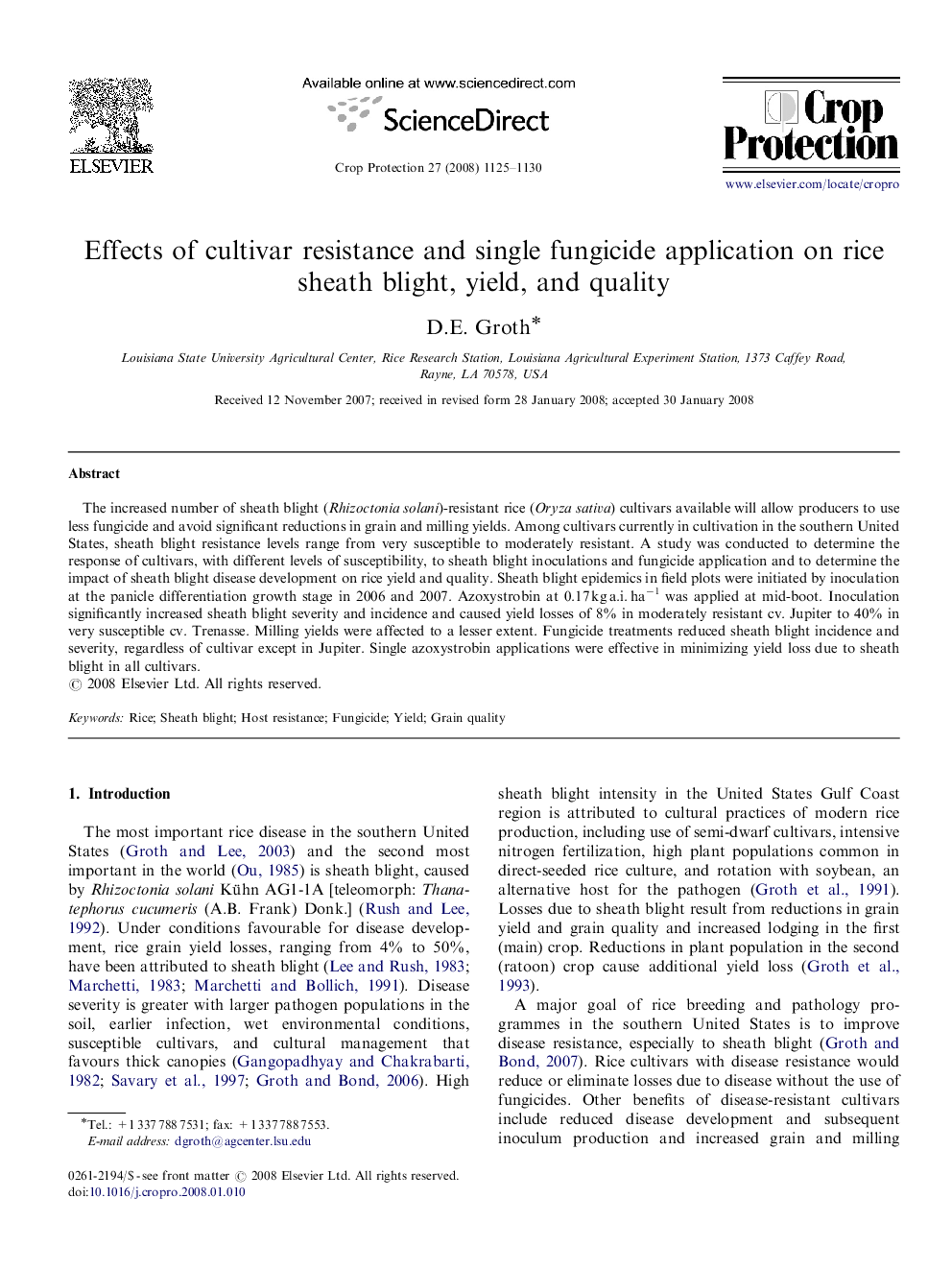| Article ID | Journal | Published Year | Pages | File Type |
|---|---|---|---|---|
| 4507760 | Crop Protection | 2008 | 6 Pages |
The increased number of sheath blight (Rhizoctonia solani)-resistant rice (Oryza sativa) cultivars available will allow producers to use less fungicide and avoid significant reductions in grain and milling yields. Among cultivars currently in cultivation in the southern United States, sheath blight resistance levels range from very susceptible to moderately resistant. A study was conducted to determine the response of cultivars, with different levels of susceptibility, to sheath blight inoculations and fungicide application and to determine the impact of sheath blight disease development on rice yield and quality. Sheath blight epidemics in field plots were initiated by inoculation at the panicle differentiation growth stage in 2006 and 2007. Azoxystrobin at 0.17 kg a.i. ha−1 was applied at mid-boot. Inoculation significantly increased sheath blight severity and incidence and caused yield losses of 8% in moderately resistant cv. Jupiter to 40% in very susceptible cv. Trenasse. Milling yields were affected to a lesser extent. Fungicide treatments reduced sheath blight incidence and severity, regardless of cultivar except in Jupiter. Single azoxystrobin applications were effective in minimizing yield loss due to sheath blight in all cultivars.
